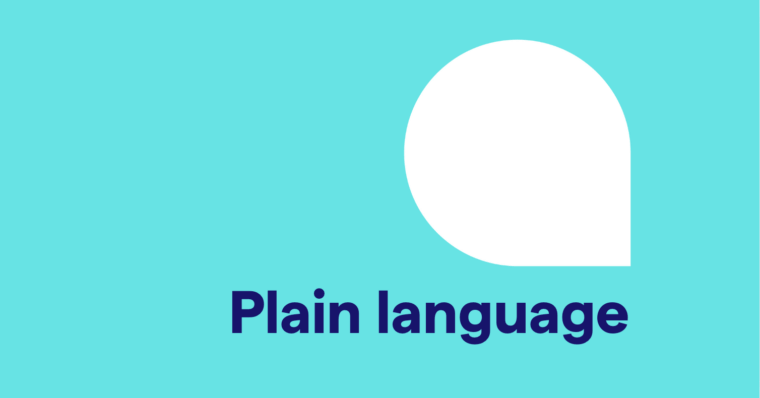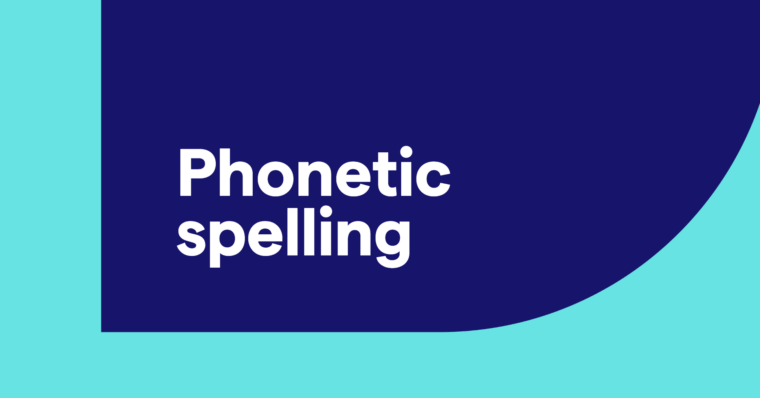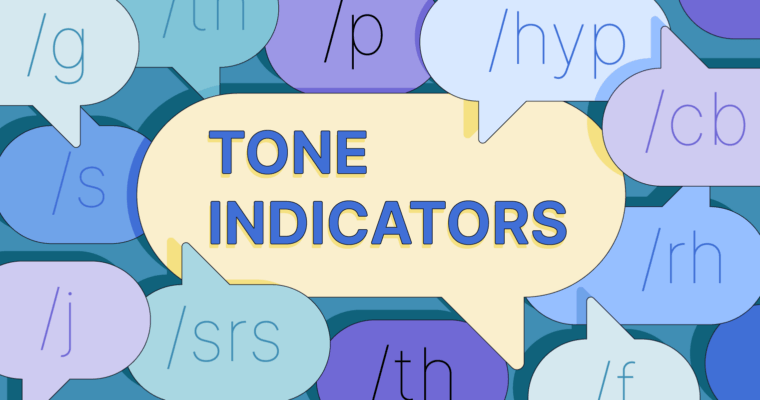
Plain language is simple, direct language that communicates ideas and messages clearly. In the workplace, plain language is crucial for a few reasons:
- It reduces the likelihood of misunderstandings or confusion.
- It delivers messages promptly.
- It’s an easy way to communicate across linguistic and cultural barriers.
When communication in a workplace is clear and simple, the whole team can be more productive. Clear communication reduces misunderstandings and fosters a collaborative environment, which makes it easier for people to connect, problem-solve, and work together effectively. In this post, we will break down plain language at work and in other areas of your life, explaining what it is, what it achieves, and how you can harness it to become a stronger communicator.
What is plain language?
Plain language, also known as simple language, is communication that is concise, clear, and easy to understand. It can be spoken or written. It does not include figurative language or complex sentence structure. With plain language, the goal is for the reader or listener to understand quickly and easily.
Why plain language matters in professional settings
In professional settings, communication often moves fast. It also travels through multiple people, potentially across different channels like email, phone calls, and face-to-face meetings. In workplace communication, using plain language can prevent your meaning from being inadvertently (or advertently!) changed, misunderstood, or lost.
Clear messages are the easiest to understand. This makes other workplace challenges, like decision-making and planning, easier for everybody involved.
Key benefits of using plain language in professional communication
Using plain language at work comes with a range of benefits. These include:
Increases understanding across teams
The simpler your language, the easier it is to understand its message. This is crucial in any work environment, but when you’re communicating to global and otherwise diverse teams, plain language can be the difference between being understood and causing productivity-slowing delays.
In a world where more than 90% of US employers have team members who do not use English as their primary language, plain language empowers everyone.
Reduces errors and miscommunication
Take a look at this example sentence:
The lights of the conference room are to be turned off before you leave for the day.
What this means is that somebody should turn off the conference room lights before they go home, but it contains the passive voice and other language that can make the message unclear. Now look at it rewritten in plain language:
Please turn off the conference room lights at the end of your workday.
Notice how much more direct this second version is. It’s easier to understand and less likely to cause a misunderstanding or mistake.
Saves time and boosts productivity
Grammarly’s 2024 State of Business Communication report shows that communication drives almost everything else in the workplace. Communication is such a critical part of our workdays, and clear communication is a must. Here are a few statistics from the report:
- Workers spend about half their workweek on writing tasks.
- People spend 88% of their workweek communicating.
- Among business leaders, 84% are communicating in more channels than ever before.
Improves employee engagement
Plain language can also foster a more open, inclusive environment because, by design, it’s accessible to every team member.
Practical steps to implement plain language at work
Implementing plain language at work can involve changing how you write and speak. It may also require a few meetings and/or group emails to explain what’s changing and how to implement your new plain language style guide. Here are a few practical tips for embracing plain language at work:
Simplify your vocabulary
Consciously choose simple vocabulary in your workplace speech and writing. This means reducing or eliminating your use of jargon, acronyms, and overly complex terms. In scenarios where you can’t avoid these, be sure to provide a clear explanation for any terms that may be unfamiliar to the reader/listener.
Focus on short sentences and clear structure
Opt for short sentences that have clear, linear structures. For example, instead of a multi-clause sentence, rephrase your idea as two or more short sentences. Implement this in emails, meetings, reports, and internal documentation.
Use active voice instead of passive voice
The passive voice has its place, but not in simple language. Use the active voice to make your statement as clear and direct as possible. Here’s the difference between the active and passive voices:
Active: I threw the ball.
Passive: The ball was thrown by me.
Tailor communication to the audience
As a general guideline, plain language is effective because everybody can understand it. That said, knowing when it’s most and least needed is important in implementing it. Internal stakeholders like executives and individuals in specialized roles understand industry jargon and niche vocabulary, so with them, you’re less likely to encounter a misunderstanding if you don’t use plain language. New employees, customers, and individuals from departments other than your own are generally best served by plain language.
Tools and resources for writing in plain language
Tools like Grammarly can help you revise workplace documents in plain language. They can also help you write internal guidelines for plain language at work.
Common myths about using plain language at work
Myth 1: Plain language is too informal or unprofessional
Simple language is not inherently unprofessional, nor is it inherently casual. Think of simple language as the information in a school textbook or government PSA—it maintains an authoritative, professional tone without using complex words or sentences.
Myth 2: More complex language shows expertise
Although expert-level writing and communication often include specialized language, the wording in this kind of writing isn’t what communicates its authors’ expertise. Simply put, using plain language can demonstrate your expertise as effectively as, or even more effectively than, complex language.
Myth 3: Plain language is only for external communication, not internal
Plain language is appropriate for both internal and external communication. Knowing how to communicate clearly to all audiences is one of the most valuable professional skills to cultivate.
Examples of using simple language in professional scenarios
Email communication
Before
Dear Ahmad,
If you would kindly reach out to Kevin so a meeting can be scheduled, that would be great.
Best,
Sani
After
Dear Ahmad,
Please email Kevin to schedule a meeting.
Thank you!
Best,
Sani
Presentations and meetings
In presentations and meetings, plain language can help participants better understand the topic you’re discussing. By helping them understand the topic, plain language also makes it easier for them to ask questions and engage more thoughtfully, which enables them to have more productive meetings.
Reports and documentation
Here’s an example of how plain language can make a technical document easier to act upon:
Before
Scope
Design and implement a comprehensive website with full e-commerce and search functionality, ensuring that speed remains a top priority alongside UX.
After
Scope
Design and build a website that offers search and shopping functions. Emphasize speed as part of the user experience.
Overcoming resistance to simple language in the workplace
Sometimes, teams resist changes like incorporating plain language.
Addressing concerns about professionalism
Assure the team that implementing plain language is not dumbing down content. It’s about making the content clearer and more efficient. Rewrite a familiar document like the employee handbook to demonstrate this.
Gaining buy-in from leadership and teams
Show teams and leaders statistics about plain language’s effectiveness to demonstrate its value.
How to measure the impact of plain language
Tracking efficiency gains
Plain language is efficient, and you can see just how impactful it is by measuring workplace statistics like:
- The number of calls to IT
- How long it takes to resolve IT and other internal issues
- Length of meetings
- Project start-to-end time frames
Employee feedback
Implementing plain language at work is only effective if the whole team is willing to participate. Use surveys and other feedback tools like polls to gather team members’ opinions. Then make changes to your plain language plan as needed.
Reduced errors and misunderstandings
Take note of the communication errors that arise at work. Incorporating plain language will ideally resolve these issues, but don’t expect it to happen immediately or to eliminate miscommunications forever. Instead, track errors and compile the data to show how the number and nature of miscommunications change over time.
Quick takeaways
- Plain language boosts productivity, reduces errors, and fosters better collaboration.
- Simple language doesn’t compromise professionalism; it enhances clarity.
- Tailor plain language approaches to suit different communication channels (emails, meetings, reports).
- Use tools like Hemingway or Grammarly to streamline and simplify writing.
- Measure the effectiveness of simple language by tracking communication efficiency and employee feedback.
Plain language FAQs
What is the difference between plain language and informal language?
Simple language is clear and concise, while informal language may include slang or a casual tone.
Can using plain language make me sound less professional?
No, simple language enhances professionalism by improving clarity and precision.
How can I get my team to adopt plain language?
- Provide examples of plain language
- Train the team on plain language use
- Demonstrate plain language’s effectiveness through relevant stats and role-play scenarios
What are some good tools to help me write in plain language?
The Hemingway Editor, Grammarly, and Flesch-Kincaid readability tests are excellent for simplifying writing.
How do I deal with jargon-heavy industries?
Use plain language wherever possible, but sometimes, jargon is necessary. Clarify jargon with simple explanations.






